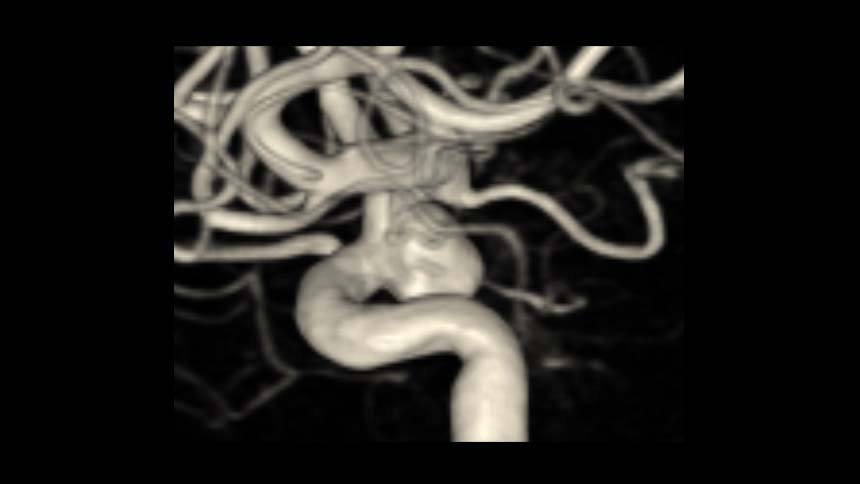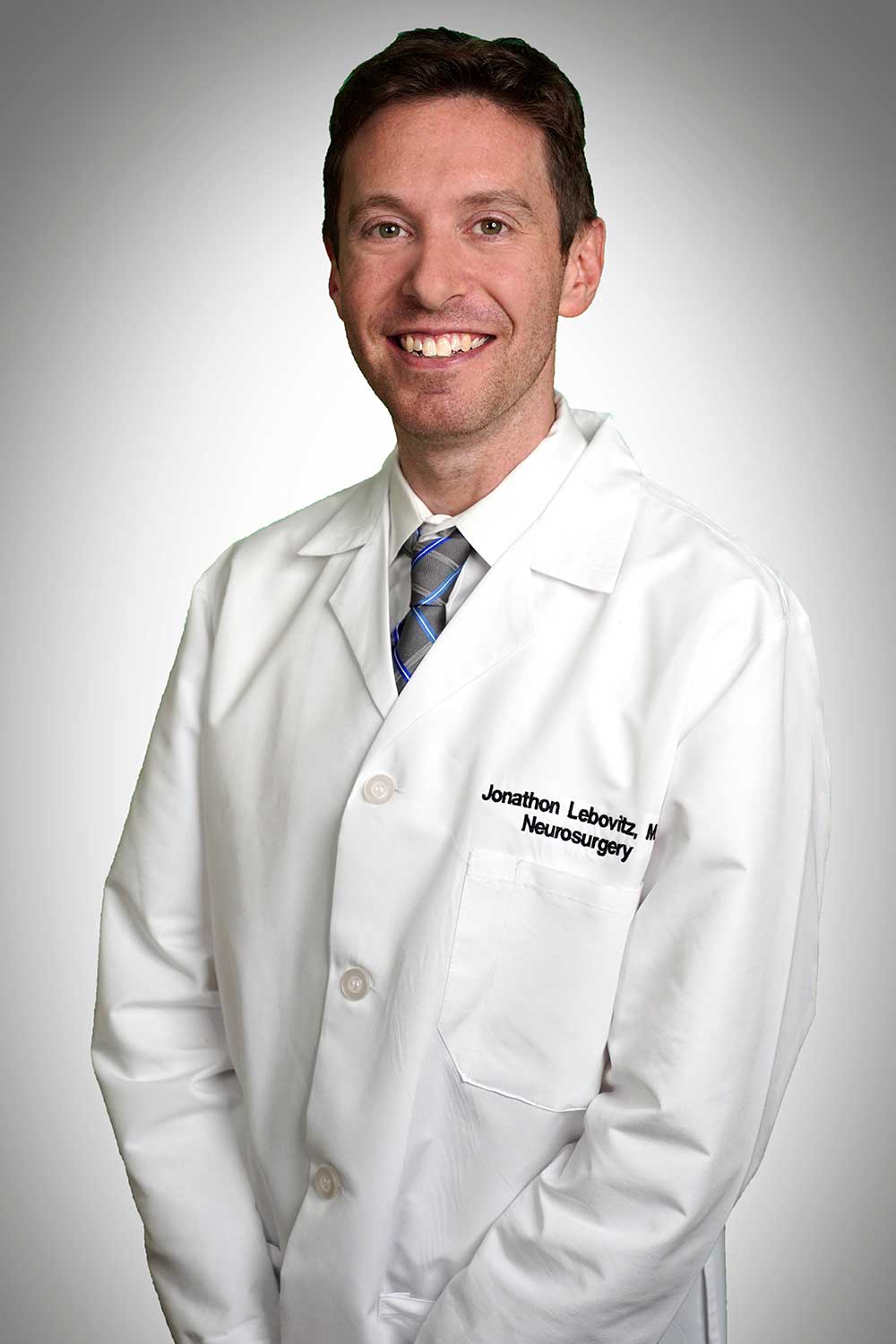Man Feels “Lucky” Brain Aneurysm was Found and Treated Without it Rupturing

08/19/2021
Unruptured brain aneurysms may have no symptoms until they burst and cause a life-threatening medical emergency
Milton Reyman, a 66-year old from New Milford, Connecticut, felt light headed and so dizzy he could not stand up. His symptoms were causing him stress and his heart was racing. He dialed 9-1-1 thinking he might be having a stroke.
The emergency medicine team at the New Milford Hospital Arnold Emergency Department ordered a CT scan and a CTA scan — a type of imaging used to evaluate and diagnose blood vessel conditions, such as aneurysms or blockages that could cause a stroke.
The scans showed Milton was not having a stroke, but he was at risk for one. He would later learn he had a large brain aneurysm — a bulging or weakening of an artery wall — in the paraopthalmic artery.
A serious brain aneurysm
“I was in denial about having a brain aneurysm. I thought, ‘maybe it is something else,’ especially because my symptoms went away and I was able to go home from the hospital,” said Milton.
Even though Milton knew he needed to see a neurosurgeon right away, he said, “Reality only set in after I had sat down with Dr. Lebovitz and he said my situation was serious enough to investigate the aneurysm further.”
Dr. Jonathon Lebovitz is a fellowship-trained neurosurgeon who specializes in cerebrovascular neurosurgery and treating conditions involving blood vessels of the brain and spinal cord. He offers patients minimally invasive techniques to aid in faster recovery including advanced transradial (through the wrist) neurointerventions.

Dr. Jonathon Lebovitz, Neurosurgery
Dr. Lebovitz recommended Milton have an angiogram to get more information and develop an effective treatment plan for him. Dr. Lebovitz performed the angiogram — imaging of the inside of the blood vessels — at Danbury Hospital.
“I knew exactly what to expect during the angiogram because Dr. Lebovitz explained it well. I just had a little dot on my wrist from where he entered an artery with a tiny tube. I did not feel like I was operated on in any way,” said Milton. “The experience gave me confidence that if he had to go into my brain, it would be okay.”
“Based on the angiogram results, I recommended treating Milton’s aneurysm because its size was concerning,” said Dr. Lebovitz. “Aneurysms can leak or burst and cause bleeding in the brain if they grow larger or are not perfectly regular or round in shape.”

Milton’s brain aneurysm before Dr. Lebovitz treated it
Bleeding in the brain caused by a ruptured aneurysm — called a subarachnoid hemorrhage (SAH) — is a type of stroke and life-threatening medical emergency. A SAH can cause permanent brain damage or death if not treated quickly.
Milton said he felt “lucky” his aneurysm was detected.
Most unruptured brain aneurysms may go undetected because they do not cause symptoms until they are large or burst.
About 25 percent of people with a ruptured brain aneurysm do not survive the first 24 hours, and about 25 percent die from complications within six months.
“We proactively treat patients with brain aneurysms that are at risk of bleeding before they rupture to increase their chances of recovering with little or no disability,” said Dr. Lebovitz.
“I trusted Dr. Lebovitz because he showed me pictures of the aneurysm and clearly explained the procedure to me and my sister,” said Milton.
Milton’s sister, who is a retired nurse, researched Nuvance Health’s hospitals, Dr. Lebovitz and the procedure he recommended and validated everything.
“My sister gave me confidence, too,” said Milton.
A minimally invasive procedure to treat the brain aneurysm
“Dr. Lebovitz’s office arranged everything for the procedure. I felt like I did not have to do anything but focus on the procedure,” said Milton.
Milton was one of the first patients to have a procedure in Norwalk Hospital’s new Biplane Angiography Suite. The suite has the latest technology for diagnosing and treating complex neurological problems with minimally invasive techniques and precision.
Before the procedure, Milton said he was “nervous” but then “once I was in the suite, I felt calm because I could tell I was in good hands.”
Milton continued, “Everyone was nice and kept me informed.”
During the procedure, Dr. Lebovitz guided a catheter over a tiny wire through Milton’s femoral artery in his upper thigh to reach the aneurysm at the base of his skull.
He then placed a stent across the opening of the aneurysm to divert blood flow away from it. The aim is for the artery to reform around the stent and cut off blood supply to the aneurysm so it shrinks and disappears within six months after the procedure.
Milton will be on dual antiplatelet therapy — blood-thinning medications — to reduce the risk of the stent narrowing or causing a blockage.
Then, Milton will have a six-month angiogram to see if the aneurysm is gone. If it is, he will just need MRIs every year for checkups.
“This endovascular procedure, called a Pipeline embolization, is the standard of care and safest treatment for this type of aneurysm,” said Dr. Lebovitz.
Milton woke up in the intensive care unit (ICU) feeling, “a little tired and woozy, but overall fine.”
Although Milton was in the ICU only a short time he noted, “I never had such dedicated care. I never had to ask for anything and the staff let me know everything that was happening.”
From beginning to end, Milton was only at Norwalk Hospital for 24-hours and walked out of the hospital on his own.
“No trace” of a brain procedure
“I was amazed when I looked in the mirror and there was no trace that I had a brain procedure. I had no wound and no dressing,” said Milton. “I also had no pain.”
Milton said he did not need to take any pain medication after the procedure. He also said he felt like he could resume normal activities within 48-hours of being home from the hospital. However, he followed the discharge instructions and avoided strenuous activities for about a week.
He was happy when he could resume walking his Labrador Dachshund mix, Daisy.
Milton was just settling into his recent retirement from being a cook at a restaurant when the brain aneurysm surprised him.
Today, he is tackling home improvements and enjoying gardening, especially tending to his flowers.
“I love taking walks outside my house in the morning, seeing something pretty and smelling my flowers,” said Milton.
“At the beginning, my situation felt scary, but overall it was a painless, smooth experience with no surprises,” said Milton.
Brain aneurysm awareness
Be aware of risk factors
Brain aneurysms can happen to anyone at any age, but most commonly occur in adults between the ages of 30 and 60, and in more women than in men. Risk factors for brain aneurysms include smoking, high blood pressure, personal history and family history.
Dial 9-1-1 if you experience these symptoms
Large, unruptured brain aneurysms that press on nerves and tissues may cause a dilated pupil in the eye, pain above or behind the eye, numbness or weakness on one side of the face or vision changes including double vision.
The most telling symptom of a ruptured brain aneurysm is a severe headache. Most people describe it as the worst headache of their life. Even people who have chronic headaches describe the headache they had from a ruptured aneurysm as different and more severe. Some people may also experience stroke symptoms or neck pain.
The outcome of treatment for a brain aneurysm varies from person to person. No individual results should be seen as typical.
About Dr. Jonathon Lebovitz
Jonathon Lebovitz, MD is a fellowship trained neurosurgeon at Neurosurgical Associates of Southwestern Connecticut. In addition to providing comprehensive treatment in all aspects of neurosurgery, he specializes in the treatment of complex cerebrovascular disease including aneurysms, vascular malformations and acute stroke.
Dr. Lebovitz offers conservative and advanced surgical treatments of complex spine and cranial abnormalities including trauma, tumors, and hemorrhage. He utilizes minimally invasive techniques to perform spinal decompressions, spinal fusions, brain and spinal cord tumor treatments, and intracerebral hemorrhage evacuations.

Recent News
Woman’s “Terrible Headache” Turns Out to be a Life-Threatening Brain Bleed
Woman’s “Terrible Headache” Turns Out to be a Life-Threatening Brain Bleed 08/02/2021 Karen Smith-Gattuso had emergency surgery to treat a ruptured brain aneurysm Karen Smith-Gattuso has had no major health concerns and has never been in an ambulance or hospital as a...
Dad Dances All Night at Daughter’s Wedding After Spine Surgery
Dad Dances All Night at Daughter’s Wedding After Spine Surgery 08/10/2022 William Green had excruciating pain and could barely walk from a lower back injury William Green, 64, had terrible pain from his lower back shooting down his left leg. It was affecting his...
Woman With Cancer Bounces Back After Two Spine Surgeries for Herniated Disc and Bone Spur
Woman With Cancer Bounces Back After Two Spine Surgeries for Herniated Disc and Bone Spur 02/21/2023 Nuvance Health neurosurgeon designs the least invasive spine surgeries possible due to Randi Rote’s history of multiple myeloma, spinal stenosis and a life-threatening...
Two-Year-Old Narrowly Survives Emergency Brain Surgery During COVID-19 Pandemic
Two-Year-Old Narrowly Survives Emergency Brain Surgery During COVID-19 Pandemic 03/29/2021 The list of things scarier than a pandemic caused by an unknown virus is short. For Claire and Mark, on that list is their two-year-old son undergoing emergency surgery for a...
Cancerous Brain Tumors Finding Shocks Woman Whose Husband Also has Brain Cancer
Cancerous Brain Tumors Finding Shocks Woman Whose Husband Also has Brain CancerNorwalk, Connecticut, August 26, 2021 — After 49 years of marriage, Jayne Davis said, “My husband Frank and I are like mac and cheese. Not the same, but similar.” This oddly rang true when...
Twenty-Two Year Old Stroke Patient from Norwalk Hospital Makes Full Recovery
Twenty-Two Year Old Stroke Patient from Norwalk Hospital Makes Full RecoveryNORWALK, Connecticut, October 17, 2018 — Twenty-two year old Sawyer Gaines suddenly couldn’t move his right arm. He was light headed, and felt like he was drifting away. He knew something was...